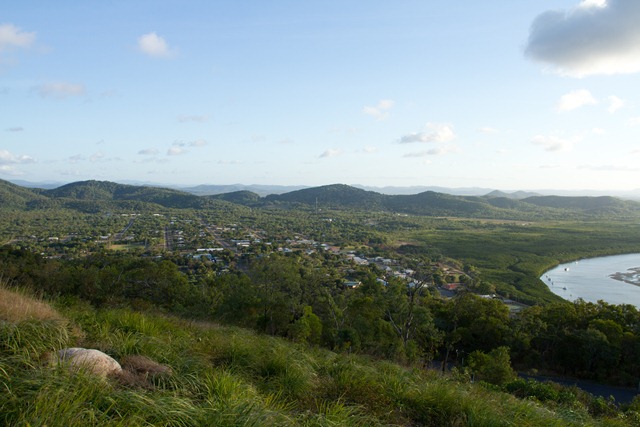 We drove from Endeavour Falls to Cooktown, a short drive, but with a morning tea stop as we reinflated the tyres ready for the bitumen.
We drove from Endeavour Falls to Cooktown, a short drive, but with a morning tea stop as we reinflated the tyres ready for the bitumen.
Cooktown is a small historic town surrounded by lovely countryside. It was here that James Cook beached the Endeavour after it struck the Great Barrier Reef at high tide near Cape Tribulation.
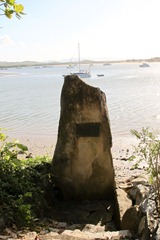 The Endeavour should have sunk, but for Cook’s seamanship, the disposal of 50 tonnes of stores, canons and anchor and the fact that a piece of coral stuck in the hole, allowing the fothering of a sail positioned on the outside the hull and sucked into the hole. This stone marks the spot where Cook tied the Endeavour to a tree on the shore.
The Endeavour should have sunk, but for Cook’s seamanship, the disposal of 50 tonnes of stores, canons and anchor and the fact that a piece of coral stuck in the hole, allowing the fothering of a sail positioned on the outside the hull and sucked into the hole. This stone marks the spot where Cook tied the Endeavour to a tree on the shore.
Cooktown was founded in the wake of discovery of Gold on the Palmer River in 1872 by William Hann. In 1873 James Mulligan found 102 ounces of payable gold and this led to the Palmer River Gold Rush. A Port was needed for the miners and one was established on the banks of the Endeavour River and called Cook's Town.
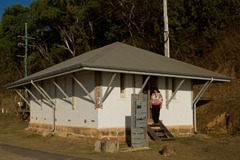
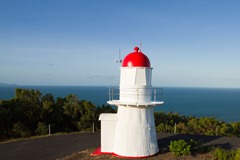
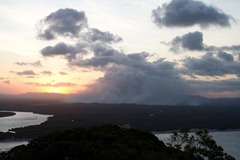
We visited the powder magazine. This provided safe storage for the explosive used on the Goldfields. On Grassy Hill we watched the sunset and smoke from a large fire burning at the airport. Built in England the Lighthouse was shipped to Cooktown in 1885. Captain Cook climbed this hill to plot his way out of the surrounding coral reefs.
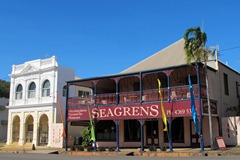
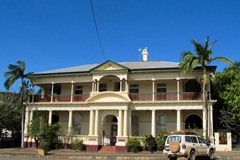
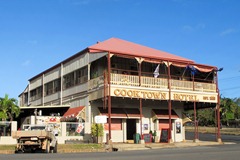
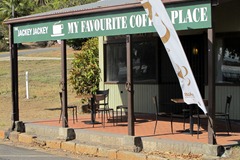 We enjoyed a stroll down Charlotte Street and seeing the lovely old buildings. Cooktown once aspired to be the Capital of the North and built accordingly. The new residents didn't understand the climate and many of the buildings were destroyed in various cyclones but enough remain to allow one to imagine the town as it would have been. We had coffee at Jackey Jackeys. Jackey Jackey (Galmahra) accompanied surveyor Edmund Kennedy on his 1848 expedition North and was one of the few survivors. He showed great heroism in saving the few remaining survivors and locating Edwards body.
We enjoyed a stroll down Charlotte Street and seeing the lovely old buildings. Cooktown once aspired to be the Capital of the North and built accordingly. The new residents didn't understand the climate and many of the buildings were destroyed in various cyclones but enough remain to allow one to imagine the town as it would have been. We had coffee at Jackey Jackeys. Jackey Jackey (Galmahra) accompanied surveyor Edmund Kennedy on his 1848 expedition North and was one of the few survivors. He showed great heroism in saving the few remaining survivors and locating Edwards body.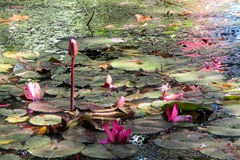 Exploration in the Cape was tough.
Exploration in the Cape was tough.
We visited the Natures Powerhouse complex. This houses the Information Centre, the Vera Scarth Johnston collection of Botanical Illustrations, the Charles Tanner exhibition of local wildlife and a nice little verandah cafe. It is situated in the Botanic Gardens which are large in keeping with Cooktown's aspirations. They had a novel approach to raising funds, selling flowers from the gardens to the locals. They are beautiful tropical gardens and we got a better look at the rare red waterlily. The Solander Garden has living specimens of the plants that Daniel Solander and Sir Joseph Banks collected in 1770.
We embarked on part of the rim walk around town. Cooktown has a series of walks visitors can do and that was our first. Most of this particular walk remains within the Botanic Gardens. We walked from the Natures Powerhouse Complex to Finch Bay then Cherry Tree Bay and then via Grassy Hill to Jackey Jackey’s, a feature of our afternoons. These walks are steep.
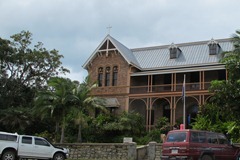 We visited the James Cook Museum. It started life in 1889 as a Catholic Sisters of Mercy Convent and Girls Boarding School aiming to bring an excellent education to the girls of the far North, a fitting school for a wealthy Capital City. Girls from remote areas lived most of their educational lives at this school as going home was not an option. Cooktown declined as the Palmer Gold fields were worked out and Cairns rose to prominence. Cairns rise was due to improved road transport and the increasing reliability of flight. Cooktown had too many cyclones. The convent became a non boarding Catholic Primary School. During WW2 Cooktown and the North were completely evacuated of civilians and the convent was requisitioned by the Americans who used it as a one of their bases for the Battle of the Coral Sea. There were some 20,000 people in Cooktown and the airport was extremely busy. There were in fact airports and Americans stationed all through the North. One serviceman felt Portland Roads was the worst airport he was ever stationed at. Australia was the place from which the war in the Pacific was mounted, although almost nothing of that massive effort is left behind.
We visited the James Cook Museum. It started life in 1889 as a Catholic Sisters of Mercy Convent and Girls Boarding School aiming to bring an excellent education to the girls of the far North, a fitting school for a wealthy Capital City. Girls from remote areas lived most of their educational lives at this school as going home was not an option. Cooktown declined as the Palmer Gold fields were worked out and Cairns rose to prominence. Cairns rise was due to improved road transport and the increasing reliability of flight. Cooktown had too many cyclones. The convent became a non boarding Catholic Primary School. During WW2 Cooktown and the North were completely evacuated of civilians and the convent was requisitioned by the Americans who used it as a one of their bases for the Battle of the Coral Sea. There were some 20,000 people in Cooktown and the airport was extremely busy. There were in fact airports and Americans stationed all through the North. One serviceman felt Portland Roads was the worst airport he was ever stationed at. Australia was the place from which the war in the Pacific was mounted, although almost nothing of that massive effort is left behind.
After WW2 was over the military left and Cooktown was relatively uninhabited until 1948 when people started to trickle back. Cooktown was struck by a cyclone in 1949 and the Convent was in a sorry state, so the Catholic Church decided to sell. The Old Girls who had been educated there weren't having any of that and eventually it was bought by the National Trust. It was still in a bad way but fortunately the Queen decided to visit and the Government of the day decided it would be nice if she could open the James Cook Museum. She accepted. They had given themselves about 6 months to get it ready, through the wet too. They succeeded, although the paint was not yet dry in some of the rooms as she walked through the door.
An American team located and raised the anchor of the Endeavour and the guns that Cook jettisoned. They are on display in the museum. 
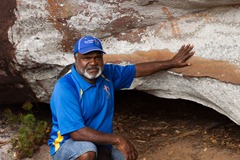
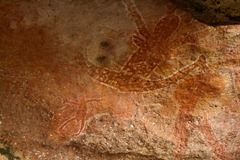
We took a Guurrbi Tour given by Willie Gordon to his family’s ancestral rock art site.
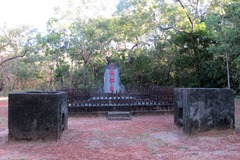
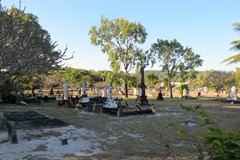 We visited the cemetery, part of the rim walk. This is also huge. Many of the 3,000 people buried here do not have grave sites as they couldn't afford it. Sometimes their descendants have come and given them a headstone. The Chinese monument is a shrine where funerary rites were conducted. Mostly the bones were disinterred later and sent home for burial in China. This reminded Tricia of Aboriginal practice where your bones have to return to where you were born thus completing the circle of life for you. What is interesting about this cemetery is that the people buried here are varied and also the death rate seems fairly constant throughout life. Normally one sees ages where people die, infants, women in childbirth, maybe an epidemic and then a gap where everyone left survives and then the age of adult death for that locality. Here people die at all ages. Many people passed through the Gold Fields. For genealogical research contact the Cooktown and District Historical Society.
We visited the cemetery, part of the rim walk. This is also huge. Many of the 3,000 people buried here do not have grave sites as they couldn't afford it. Sometimes their descendants have come and given them a headstone. The Chinese monument is a shrine where funerary rites were conducted. Mostly the bones were disinterred later and sent home for burial in China. This reminded Tricia of Aboriginal practice where your bones have to return to where you were born thus completing the circle of life for you. What is interesting about this cemetery is that the people buried here are varied and also the death rate seems fairly constant throughout life. Normally one sees ages where people die, infants, women in childbirth, maybe an epidemic and then a gap where everyone left survives and then the age of adult death for that locality. Here people die at all ages. Many people passed through the Gold Fields. For genealogical research contact the Cooktown and District Historical Society.
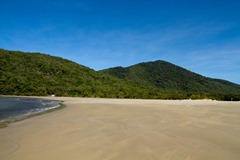
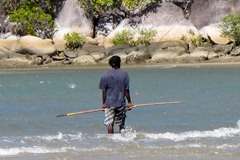
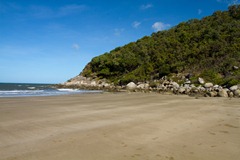
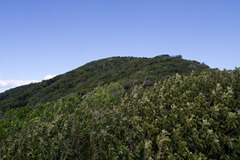
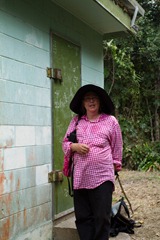
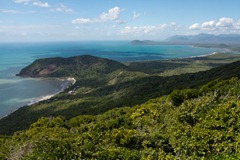



















































![NEW - THE MAPS [By Popular Request]](http://1.bp.blogspot.com/-Vajyd8kXoSk/TtvtX94QV7I/AAAAAAAAEBk/0MJEoH3UojI/s187/Around%2BAustralia.jpg)